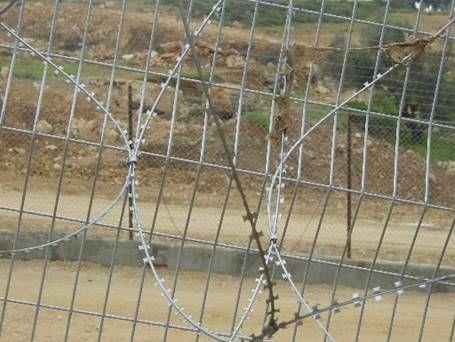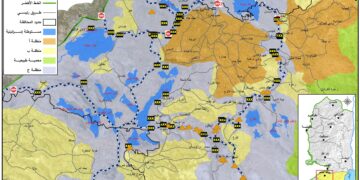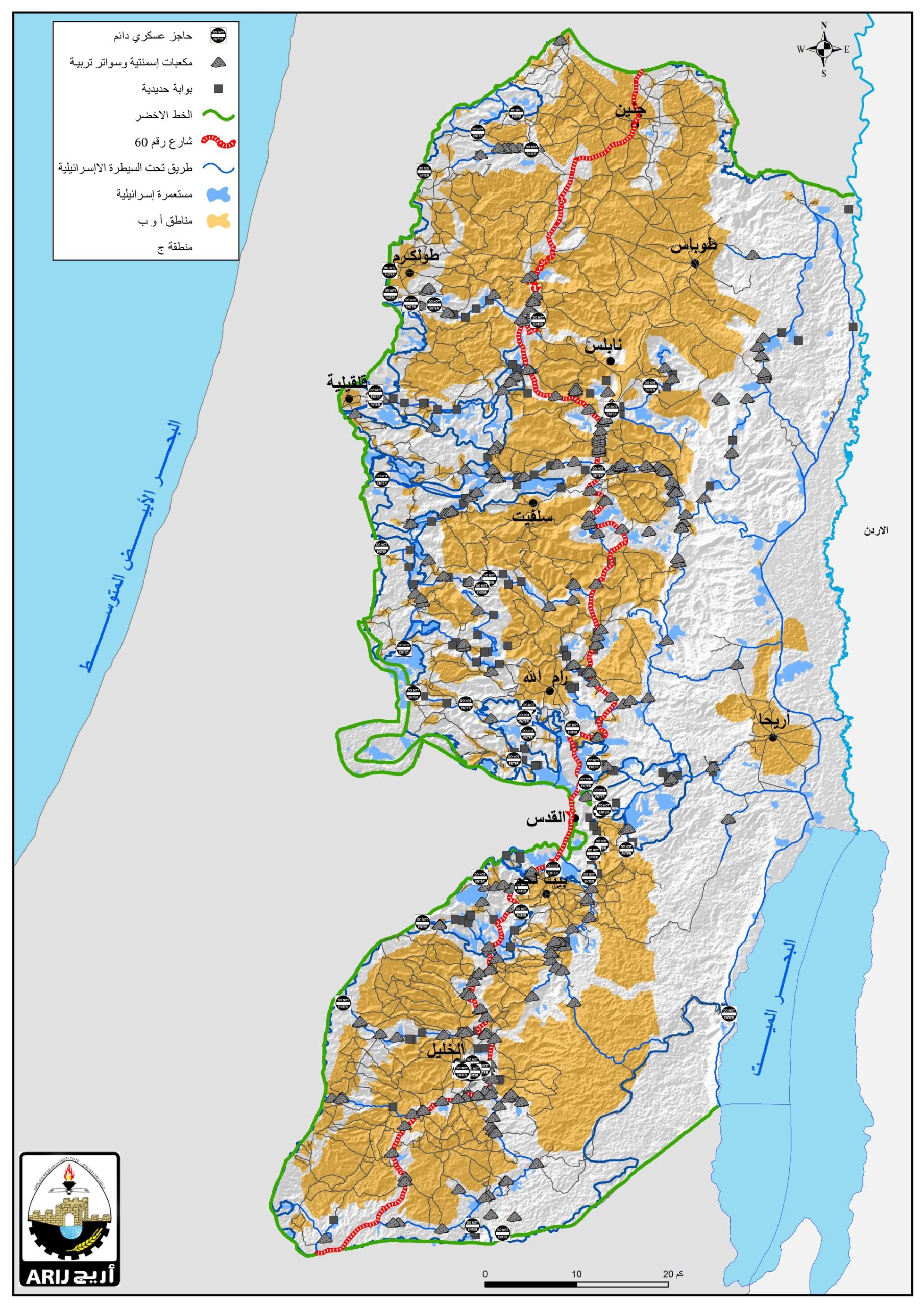Location: the Palestinian village of Baqa Al Sharqia is located at the northwestern part of the West Bank in Tulkarem governorate. (See Map1)

The map shows the Sewgregation Wall encircling the town of Baqa Al Sharqiya and isolatint it from West Bank. Source: GIS Dep.LRC
Population: about 4000 people live in the village which is considered one of the highly populated areas in the region.
Area of the village: the total area of land affiliated to the village is about 4000 dunums, while the overall area of the village master plan is only 1200 dunum.
Historical background:
The historical village of Baqa was divided after 1948 war into two parts: Baqa Al sharqiya ( East Baqa) with its land located in the West Bank and Baqa Al Gharbia (West Baqa) with its land located on the other side of the green line. Consequently, the population and land of historical Baqa were set apart by the establishment of the state of Israel. This situation continued until the current Sharon government decided last August to build the Segregation Wall. On the other hand, the village of Baqa Al Sharqiya lost about 2000 dunums of cultivated land for the construction of Trans Samaria road No. 6 which links between Israeli coastal areas and the Jordan valley. For the same purpose, the sister village of Baqa Al Gharbia, also, lost hundreds of dunums of private agricultural land. The total area of land affiliated to Baqa Al Gharbia is 9000 dunums, including the built up area which contains about 20000 citizen. According to the regional master plan, the population of Baqa Al Gharbia will reach 38000 inhabitants by the year 2020, who will find no hope for development and expansion.
The Segregation Wall and its effects:
The village of Baqa Al Sharqiya has lost 2000 dunums of its land (half of its land) for the construction of the wall. In an interview with LRC filed worker, the mayor of Baqa Al Sharqiya, Mr. Mu'aid Hussein said the following: 'The wall has annexed about 2000 dunums of the village land into Israeli proper. More than 2500 fruitful olive trees were uprooted in the confiscated land and their trunks transferred to Israeli settlements in the area for re-plantation. About 30 dunums of green houses were also destroyed. More than 3500 inhabitants of the village population were forcibly enclosed in the area between the already existed green line and newly established Segregation Wall. The Israeli army and security forces maintain constant presence on village entrances checking people entering and leaving it, which, in turn, has paralyzed the commercial life in the village and inflicted heavy losses on its people. The Israeli practices have affected all the aspects of life in the village including social relations, education and health services'.
Prepared by
The Land Research Center
LRC














